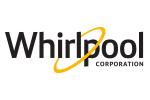CHICAGO — Utility costs, including electricity, gas, water and other essential services, often represent a substantial portion of a self-service laundry’s operating expenses. When inflation occurs, it can drive up the prices of these utilities, affecting the laundromat’s overall financial health.
2022 utilities cost averaged 21.8% as a percentage of gross for the laundry owners who responded to American Coin-Op’s 2022-23 State of the Industry survey released in April. That was up more than two percentage points from the prior year’s results.
Roughly 43% of respondents reported having a utilities cost that exceeded 20%, with one store owner saying their cost individually was 55%.
The specter of rising utility costs should be enough to send any vended laundry owner in search of strategies to help them better manage their utilities usage. But before you decide what strategies to undertake at your store or stores, you must get a sense of what your energy expenses are and what’s contributing to them.
Your local equipment distributor may be able to assist you with this, plus there are companies that specialize in performing assessments of the energy needs and efficiencies of a building, otherwise known as an energy audit.
In Part 1, we looked at how a Chicago laundry owner took advantage of some rebates to help fund upgrading certain equipment in his stores. Plus, we examined how some features of today’s cutting-edge laundry equipment help lower utility expenses.
Let’s conclude:
LIGHTEN THINGS UP
It might not seem like much but you could lower your utilities cost by switching your store’s lighting from incandescent to LED. While LED lighting systems are more expensive up front, the bulbs last, on average, much longer than incandescents.
Efficiency Vermont, that state’s energy efficiency utility, offers these LED lighting tips to save energy in your small business:
- Switch frequently used lights first, as the biggest return on LEDs come from lighting that’s always (or frequently) on—for example, your exterior lights.
- Consider the benefits of better lighting beyond saving energy. Replacing dim, yellow or flickering lights with high-quality LEDs can boost employee productivity, customer comfort and store appeal.
- Choose your color and ambiance for directional and dimming applications.
- Match the light to the task: overhead fixtures, task lighting, exterior lots.
- Add lighting controls and sensors, because they can save you money by automatically turning off lights when they’re not needed (this is something you’ll need to balance with your security needs).
- Upgrade tube fluorescents to high-performance T8 fluorescents or convert existing fixtures to accept linear LEDs.
- Make use of natural light. If it makes sense for your budget and space, add skylights and daylighting controls that adjust interior light levels based on available daylight.
WINDOW DRESSING
Your vended laundry may be one of the many that feature large plate-glass windows. When the sun penetrates a store’s standard windows, the glass radiates the heat it absorbs. The temperature inside rises and so does your utility bill. Thus, there is an opportunity to cut those costs by making the windows more energy-efficient.
One option is installing windows with low-emissivity, or low-e, glass. According to the U.S. Department of Energy, windows manufactured with low-e coatings typically cost 10-15% more than regular windows but reduce energy loss by as much as 30-50%.
A low-e coating is a microscopically thin, virtually invisible, metal or metallic oxide layer deposited directly on the surface of one or more of the panes of glass. The low-e coating lowers the window’s insulation factor, and can manage the daylight transmittance as well as the solar heat gain through the glazing system.
Another option is to install window film. According to information shared by many utilities, solar control window films applied to existing glass in windows and doors is an effective method to reduce peak demand during hot months and conserve energy.
In summer months, the film rejects the sun’s heat passing through glass windows by as much as 80%, according to the International Window Film Association (IWFA). In winter months, certain window films retain heat by reducing the convection effect of heat passing through the glass to the outside.
Window film can be installed quickly with minimal disruption to business activities, and completed for about one-seventh the cost of a typical new replacement window installation, IWFA reports.
Permanently affixed to glass, window films block 99% of the sun’s harmful UV rays while lasting beyond 15 years.
These are but a few strategies for keeping your laundry’s utility costs in check. Be sure to take some time today to see how your store measures up energy-wise, then take action to manage your costs and bolster your bottom line.
Miss Part 1? You can read it HERE.
Have a question or comment? E-mail our editor Bruce Beggs at [email protected].







